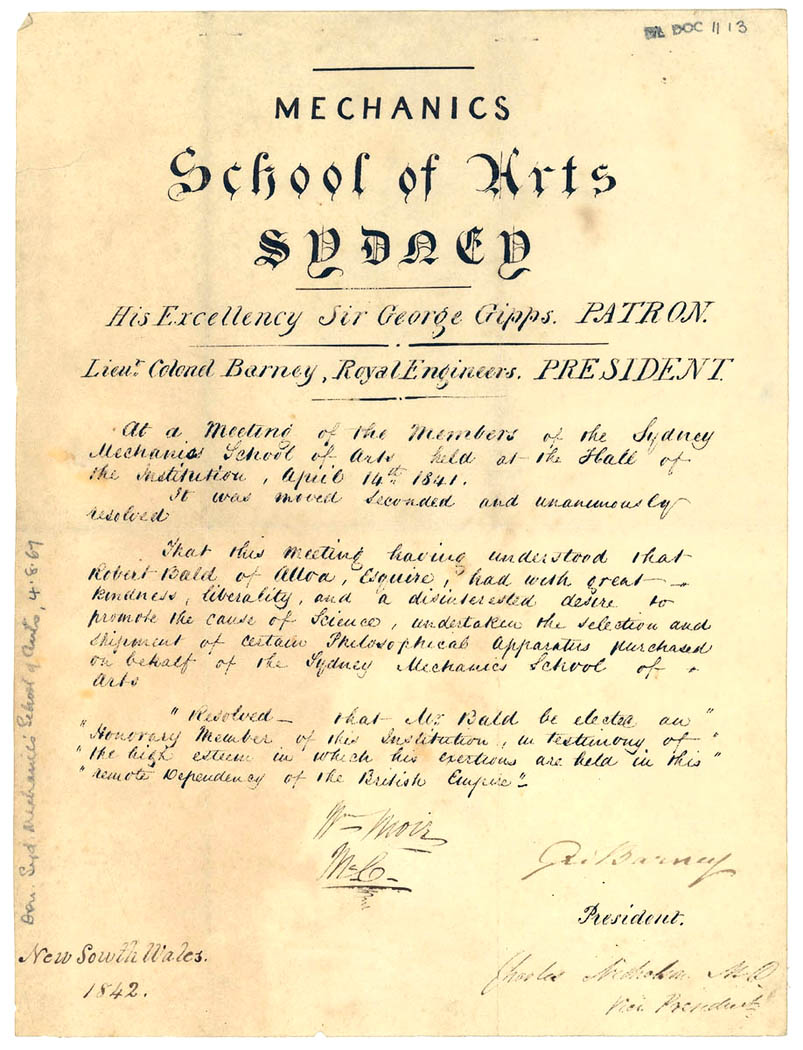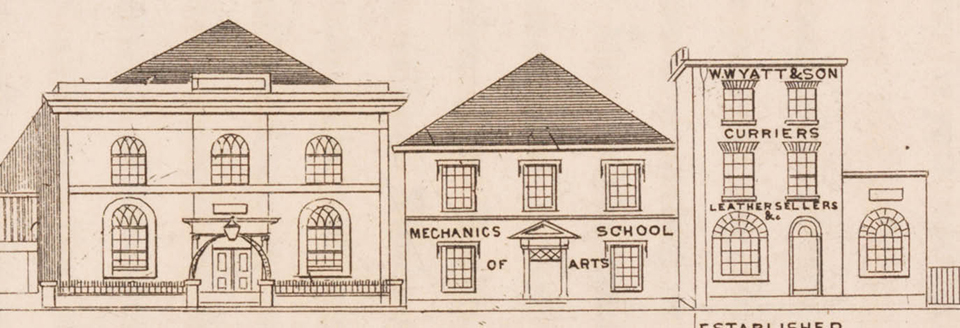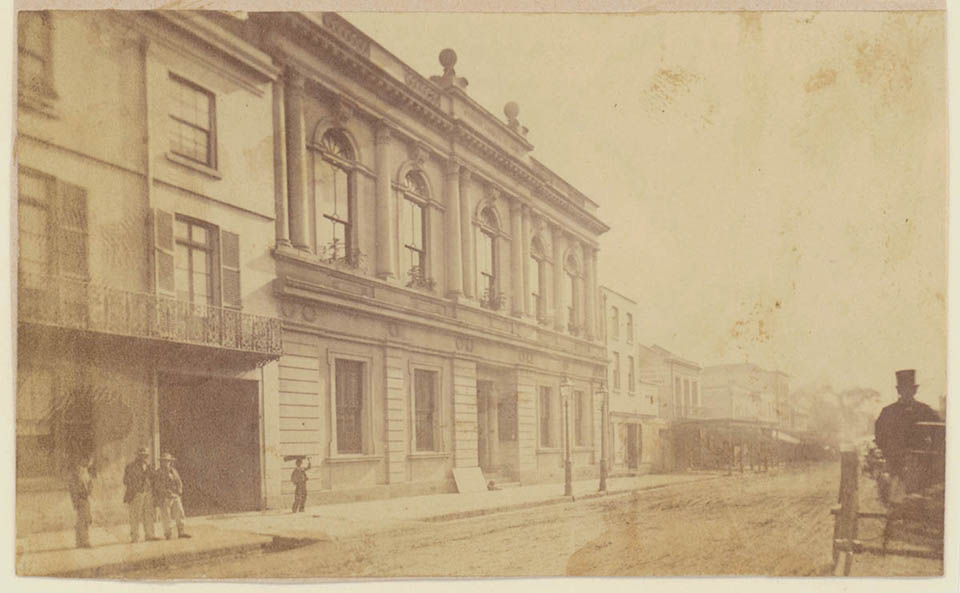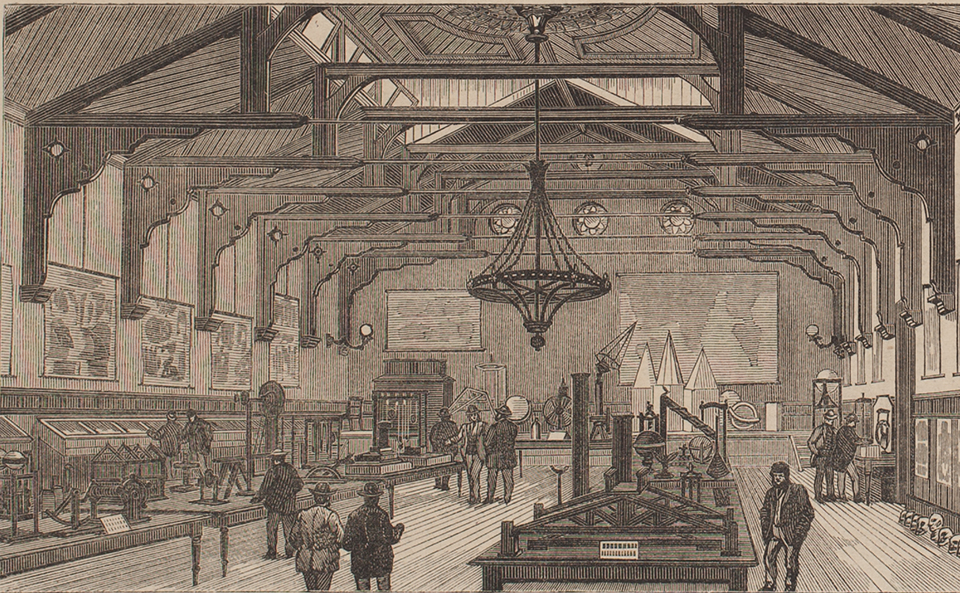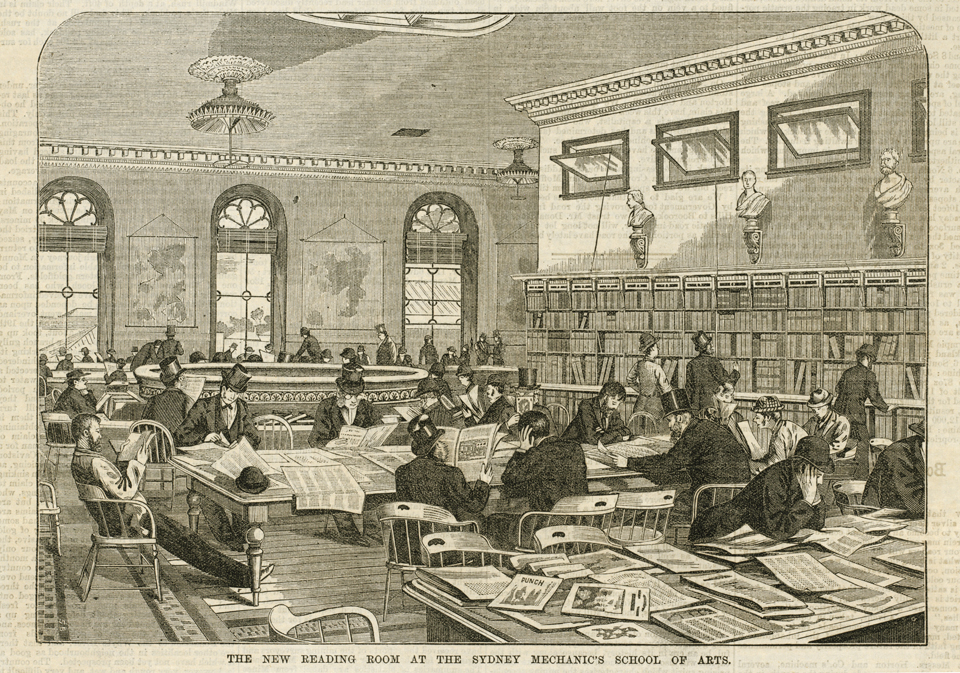The Dictionary of Sydney was archived in 2021.
Sydney Mechanics' School of Arts
Citation
Persistent URL for this entry
To cite this entry in text
To cite this entry in a Wikipedia footnote citation
To cite this entry as a Wikipedia External link
Sydney Mechanics' School of Arts
By [media]the early 1830s, Sydney Town had come a long way from its origins as a convict colony some four decades earlier. Free settlers were increasing in numbers, and among a boatload of Scottish artisans en route to Sydney in 1831 to build the Australian College for the Reverend John Dunmore Lang, was Reverend Henry Carmichael, one of Lang's associates. Carmichael gave classes to some of these men, with a view to them forming the nucleus of a Mechanics' Institute when they arrived in Sydney.
Mechanics' Institutes were a recent phenomenon – the first one had been set up in Scotland in 1821 – and their aim was the intellectual improvement of their members, through the diffusion of scientific and other useful knowledge, and the cultivation of literature, science and art.
Sydney was ready for such a development. While it still had some 21,000 convicts, the free and freed population was growing, and assisted immigration was helping to create a new society. The establishment of a Legislative Council to advise the governor brought responsible government a step closer, and successful businessmen with a social conscience took the lead in setting up such 'civilising' institutions as the Savings Bank of NSW in 1832, and the Sydney Mechanics' School of Arts early in 1833.
Government and philanthropic support
The [media]aim of this institution was to pursue further education for working men through public lectures and classes, and the establishment of a library. The colonial administration of Governor Richard Bourke soon recognised the efforts of the School of Arts and provided a land grant and a small annual subsidy to support its work. Aided by various philanthropists, the school was able to build its own [media]premises in 1836, at 275 Pitt Street.
Under the leadership of such men as Carmichael, Surveyor-General Major Thomas Mitchell, businessman Thomas Barker (who had been elected to the council of the Australian College in 1831), and educator Dr Charles Nicholson, the school flourished and became one of the leading providers of adult education in the colony, with more than 1500 students attending lectures and classes. Among those who gave classes were suffragist Louisa Lawson, explorer Ludwig Leichhardt and poet Henry Kendall, and subjects were as diverse as art, mathematics, architecture, anatomy and simple surgery. Officers and teachers of the school, such as Nicholson and Dr John Woolley, also played a role in the establishment of the University of Sydney.
[media]In the 1870s, the school expanded its scope into technical education, and formed the Workingman's College. This was later taken over by the government and moved to Harris Street, where it formed the basis of the Sydney Technical College: this in turn became the University of Technology, Sydney in 1988.
Change and development
The original [media]role of such institutes was to provide education for adults who had received little formal education as children. Thus most of the Schools of Arts and Institutes had libraries attached, and in NSW the government provided grants for the purchase of books. But over the years, as the colonial (and later state) governments began to take greater responsibility for public education, this meant the end of most of these philanthropic organisations, a process speeded up when local councils began to provide free public library facilities. Indeed, by the 1970s, even the SMSA was in some difficulties, with a large heritage building to maintain, but a declining membership. In the late 1980s, the sale of the original building – reinvented as the Arthouse Hotel by its new owners, who retained many of the building's original features – brought the organisation substantial funds, allowing it to buy premises at 280 Pitt Street and finance its ongoing programs.
Today, the Sydney Mechanics' School of Arts – the oldest School of Arts in Australia – remains incorporated under its own Act of Parliament, the Sydney Mechanics' School of Arts Incorporation Act of 1886, as amended in 1929 and 1940. It is also the oldest continuous lending library in Australia, and with over 32,000 books, mostly fiction, it holds one of the largest fiction libraries in Sydney. Offering a dynamic program of 'conversations', debates and seminars, and supporting a wide range of other organisations with a focus on creating a better world, the Sydney Mechanics' School of Arts has continued with its original mandate and positioned itself as a contemporary centre for social change and intellectual life.
References
Sydney Mechanics' School of Arts website, 'History of the SMSA', http://www.sydneymsa.com.au/index.php?option=com_content&task=view&id=25&Itemid=41, viewed 20 February 2009



